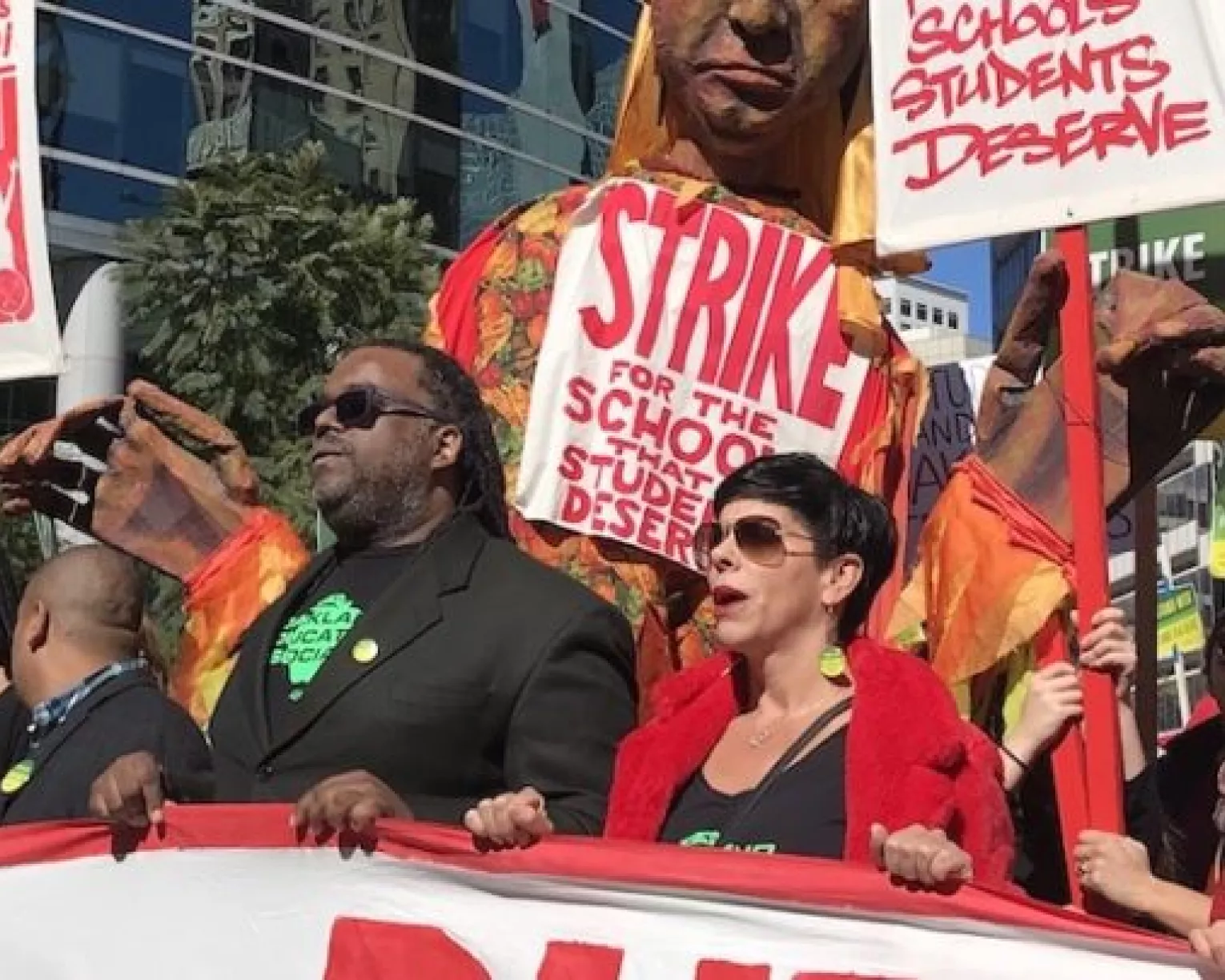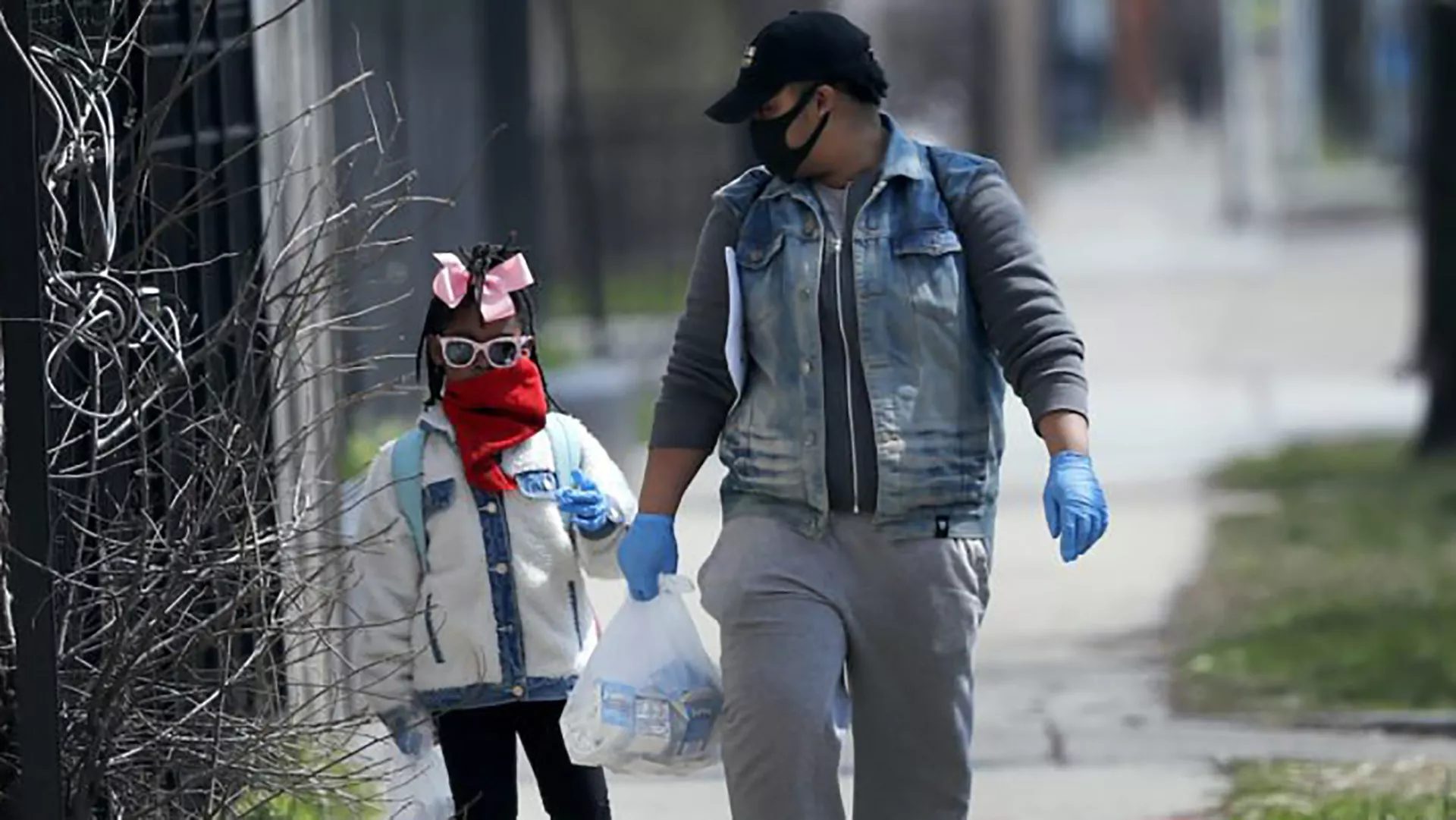Since early April, the NAACP and BET have hosted a series of virtual town halls focused on the health, economic, and social impact of the COVID-19 pandemic on the African American community.
The coronavirus has hit hard across the U.S. It’s particularly dire in rural areas and communities of color. Disparities have stressed millions of people, from economic hardships and limited access to health services to slow internet speeds and lack of internet access at home. These problems didn’t surface overnight. They’ve existed for decades, filtering into classrooms and hurting students along the way.
In part three of their four-part "Unmasked: A COVID-19 Virtual Town Hall Series,” NEA Vice President Becky Pringle, along with other top, national leaders, discussed the rising educational inequalities and how legislation can mitigate the burden African American students and other students of color face.
The hour-long call was part analysis of the current realities with an enhanced understanding of the problem, but also part solution to help move the nation toward a future that is equitable and fair for everyone.
With approximately 20,000 people on the line, Pringle was quick to call out the underlying problem that has disproportionately impacted communities of color.
“Here's the reality,” she says, "structural racism [is] the pre-existing condition that [has] destined us to be where we are—where our communities of color are disproportionately impacted by the coronavirus. We shouldn't be shocked.”
Research has long pointed to the inequitable conditions, from past to present, that many people of color have experienced: housing, financial, healthcare, education, and more. When the pandemic hit, “We [knew] this virus was destined to impact these communities more than others, and when that has a greater impact on our community, it has a greater impact on our students,” adds Pringle.
The State of the Union
NEA members across the country have witnessed and experienced these disparities first hand, which is why they moved quickly to ensure students were, first and foremost, safe, and then had access to the tools they needed for learning to continue at home.
Pringle pointed to the efforts in California, where educators delivered meals to students. She underscored the work in Florida, where teachers delivered learning packets, and in Wisconsin, where bus drivers drove to parking lots to set up hotspots for students who didn't have access to the internet.
“We are working to try to make sure our students are safe.” Watch Becky Pringle, Vice President of National Education Association explain what urgent issues we are addressing:#COVIDUnmasked https://t.co/BIf2n1GwE9 pic.twitter.com/tM6gNaLZNn — NAACP (@NAACP) April 23, 2020
Additionally, members have been providing students and their colleagues with resources on trauma to cope with the fear, isolation, and loss felt from the coronavirus, as well as dealing with the death of family and friends. To address the digital divide, some NEA affiliates have partnered with local TV and radio stations to allow teachers to broadcast lessons for students who don’t have internet access or devices at home.
During the call, Pringle emphasized that while educators and their unions have focused on the “right now” to keep students safe and keep them learning, the education community must use this experience to help build a future that is equitable and fair. “Where all of our students, every one of them, have access and opportunity,” Pringle says.
That’s why, for the past two years, educators have marched in the streets to tell decision makers to address the lack of resources that plague America’s public schools, from school nurses, school counselors, and updated technology to overcrowded classrooms and even the lack of access to recess time for young students. These #RedForEd actions have won critical support for students, with massive community involvement.
But more needs to be done, as educators on the call shared their personal stories and asked tough questions to panelists, which included Bobby Scott, chairman of U.S. House Committee on Education; Senator Elizabeth Warren of Massachusetts; Arthur Claiborne, a student leader at North Carolina A&T State University; and Tiffany Dena Loftin, youth and college director of NAACP. The call was moderated by Marc Lamont Hill, an award-winning journalist and host of BET News.
Pringle emphasized that while educators and their unions have focused on the 'right now' to keep students safe and keep them learning, the education community must use this experience to help build a future that is equitable and fair.
Tiffany, a classroom public school teacher from Texas, asked how to truly hold people accountable to get the funding her students need without having to go through a pandemic. Noni, an educator from Rochester, N.Y., brought attention to her area by addressing how students in the suburban areas have laptops, while many students who live in the city have no computers. This “makes it hard to teach...and...[it’s] frustrating,” she shares.
And then there was Joyce Morely, a member of the DeKalb County School District school board in Atlanta, Ga., who shared her disappointment in “Betsy DeVos, the proclaimed person who is the secretary of Education, [who wants to give] all the dollars to charter schools and for more charter schools to come about.”
Morely explained that in her area, educators are feeding 18,687 students a day and 81 bus drivers are going out and putting their lives at risk. Students with special needs are still being taught despite the unfilled promise of fully funding the Individuals with Disabilities Education Act. Yet, DeVos continues to support schemes that siphon money from public schools.
What educators described on the call is happening all around the country, and to address these shortfalls and other challenges, several solutions were discussed. Top contenders: organize and vote.
While short-term solutions have been put in place to ensure many students get the resources they need, the long-term solution will involve elections.
“When I became a teacher...I had no idea that I could not just step into my classroom and teach my students. I had no idea that I had to have an impact beyond the confines of my own classroom....We have to organize and vote...but not just that, once we vote, we do have to hold people accountable because every single decision that is made about our classrooms and made about our students is a political one—from the school board all the way up to the White House,” says Becky Pringle.
“We have to make sure that people in positions of power and authority are those who care about our kids and are going to do what's right so every single one of them can live into their brilliance.”
NEA Urges Congress To Take More Action
Congress has so far passed three major pieces of legislation to combat the health and economic crisis caused by COVID-19. NEA is asking for more to be done. Discussions around a phase four of a stimulus bill have begun, and NEA's top asks includes:
- Provide at least$175 billion for the Education Stabilization Fund to distribute to states, allocated by formula, for public pre-K through post-secondary education to fill budget gaps caused by declining state revenues due to the COVID-19 national emergency.
- Reject Education Secretary Betsy DeVos’ “microgrants” and other voucher schemes that siphon funding from public schools and undermine accountability.
- Provide at least $56 million for personal protective equipment for teachers, education support professionals, and other school staff who interact with students and their families, including food service workers who prepare and distribute meals, custodians who clean and disinfect buildings, security officers, and technology specialists.
NEA continues to urge the Federal Communications Commission to implement emergency measures to make changes to E-rate programs, which since 1996 has expanded internet access to the nation’s schools and libraries. These changes would allow school officials to buy Wi-Fi hot spots and equip existing equipment with Wi-Fi if it already doesn’t have it, ensuring all K-12 students have adequate home internet connectivity if their schools close.
Approximately $2 billion has been used from the program’s $4 billion cap, leaving up to $2 billion to schools for wi-fi hotspots, adding wi-fi to existing devices sent home with students.
In a letter led by NEA, more than 30 organizations urged congressional leaders to include student loan debt cancellation in any future COVID-19 relief package. The average educator begins a career with about $35,000 in student loan debt.
The Student Debt Emergency Relief Act (H.R. 6363), introduced by Rep. Ayanna Pressley (D-MA), would cancel at least $30,000 of outstanding student loan debt, boosting consumer spending and reducing the financial strain on educators and other borrowers.



